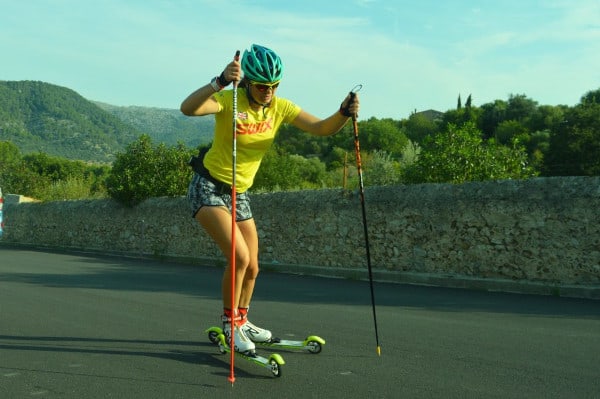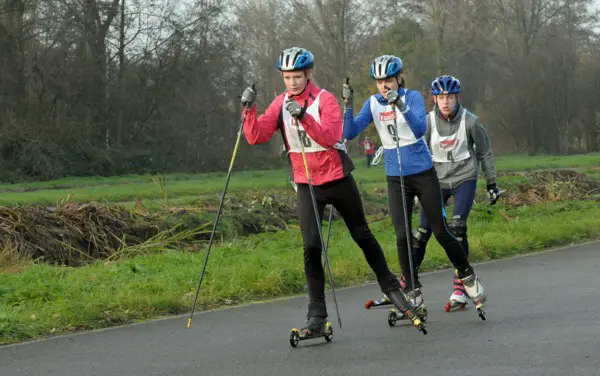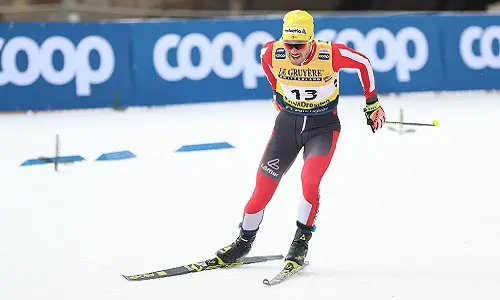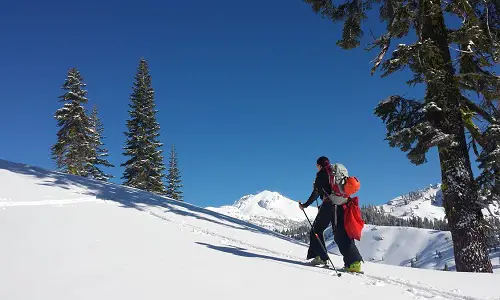Table of Contents
If you are looking for a sport to take up, here is one which offers a full body workout, while allows you to keep your skiing muscles occupied even in the snow-free months.
What is Roller Skiing?
Roller skiing often referred to as ‘road skiing’ or ‘skiing on wheels’ is a recreational summer activity and a competitive sport. It can be even considered a form of transportation. Being the on-ground equivalent of cross-country skiing, many cross-country skiers use roller skis during summers to train for winters.
What are Roller Skis?
The structure of a roller ski is rather simple. The skier uses a pair of roller skis similar to snow skis, one on each foot – just like in cross country skiing. The classic roller skis are long, flat, and hard surfaces and have wheels on their edges. If you have tried cross country skiing before, you will find these two techniques quite similar.
Roller Skiing Equipment
The usual roller skiing equipment includes roller ski bindings, ski poles, gloves, and roller ski boots. The poles not only help maintain a balance and prevent injuries but also soften the shoves you make from the asphalt while giving you a smoother experience. The roller ski boots are less insulated as compared to winter boots. They are generally designed to be more comfortable to use in temperatures above 5° C.
For skate skiing, skate skis and skate boots are preferred but sometimes the same boots are used for the classic technique too due to the added ankle support. The gloves are meant to protect the skiers’ hands from developing blisters should they fall down during roller skiing.

Brief History of Roller Skiing
In the mid-1930s, the first roller skis were constructed in North Europe and Italy. In the early 1950s, as XC skiing started to evolve as a competitive sport, so did the need for its training and summer practice. In the next 20 years, roller skiing gained so much popularity that by 1970s the first roller skiing race took place. During these early days, these skis used to have one wheel at the front and two wheels at the back of the bindings with a metal frame between 70 and 100 centimeters.
In 1976, an Italian pilot named Giustino Del Vecchio established a world record by roller skiing 240.5 kilometers (149.4 miles) in 24 hours. Vecchio achieved this on the roller skis that he designed all by himself using his knowledge as a pilot as well as the materials from the aircraft industry.
Although now roller skiing is enjoyed as a competitive sport among a lot of nations, the Italian, French, Swedish, Russian, Norwegian, and German cross-country skiers have been very strong in roller skiing competitions – just like their snow-skiing counterparts. Unfortunately, the roller skiing championships are still not officially sanctioned races by Federation Internationale de Ski, also referred to and abbreviated as FIS, or any other well-recognized sports governing body. However, in 1992, FIS did recognize roller skiing as a separate sport, and not just a preparatory summer activity for XC skiing.
Roller skiing is a quite popular in areas that are populated with Nordic skiers such as Ontario, Alaska, New York, Vermont, Alberta, New Hampshire, Maine, Michigan, Minnesota, and Wisconsin. While a large number of roller ski enthusiasts enjoy it in summers to prepare their bodies for Nordic skiing in the approaching winter season, there are many fitness buffs whose only goal is to enjoy this workout and calorie burning process that comes with this recreational activity.

Roller Ski FAQ
Is Roller Skiing Hard?
The difficulty depends primarily on the terrain you ski on. Flat surfaces are less demanding than varied terrains with downhill and uphill tracks, and the latter requires the ability to brake with ease. Although learning to brake needs a lot of practice, transferring the basic ski techniques learned on snow is easy and simple – be it either classic skiing, skate skiing, or double pole.
Is Roller Skiing Dangerous?
Roller skiing is not dangerous if you have the proper equipment and gear, for instance: binders, poles, gloves, and boots, knee and elbow pads, etc. Also, you need to keep in mind the safety precautions. Roller ski on asphalt or limestone chip trails as these surfaces are safe.
Can I Roller Ski in The Rain?
You should ideally avoid roller skiing in the rain. As a skier, the last thing you want is to hurt your chances of XC skiing in the winters. Roller skiing during rain heavily increases the risk of slipping and getting severely injured.
How Fast Are Roller Skis?
Your roller skis can go as fast as of 30 mph (50 km/h), though many professional skiers could travel the same distance in a quicker period of time. Former skier John Svenson has managed to go up to 57 miles per hour.
How Many Calories Does Roller Skiing Burn?
A 150 pounds cross-country skier would burn around 1,000 calories per hour. Depending upon the weight, speed, and metabolic rate of the skier, the calorie burning mechanism can vary. Roller skiing generally burns an average of over 500 calories per hour.
Conclusion
Roller skiing may have started as a recreational sport or a way of transportation in some parts of the world, but it has now evolved as a competitive sport and a great summer activity. It not only prepares your body for the exciting winter wonderland of cross-country skiing but is also a great exercise as it burns calories and keeps you fit. Give roller skiing a chance and you will love it!


